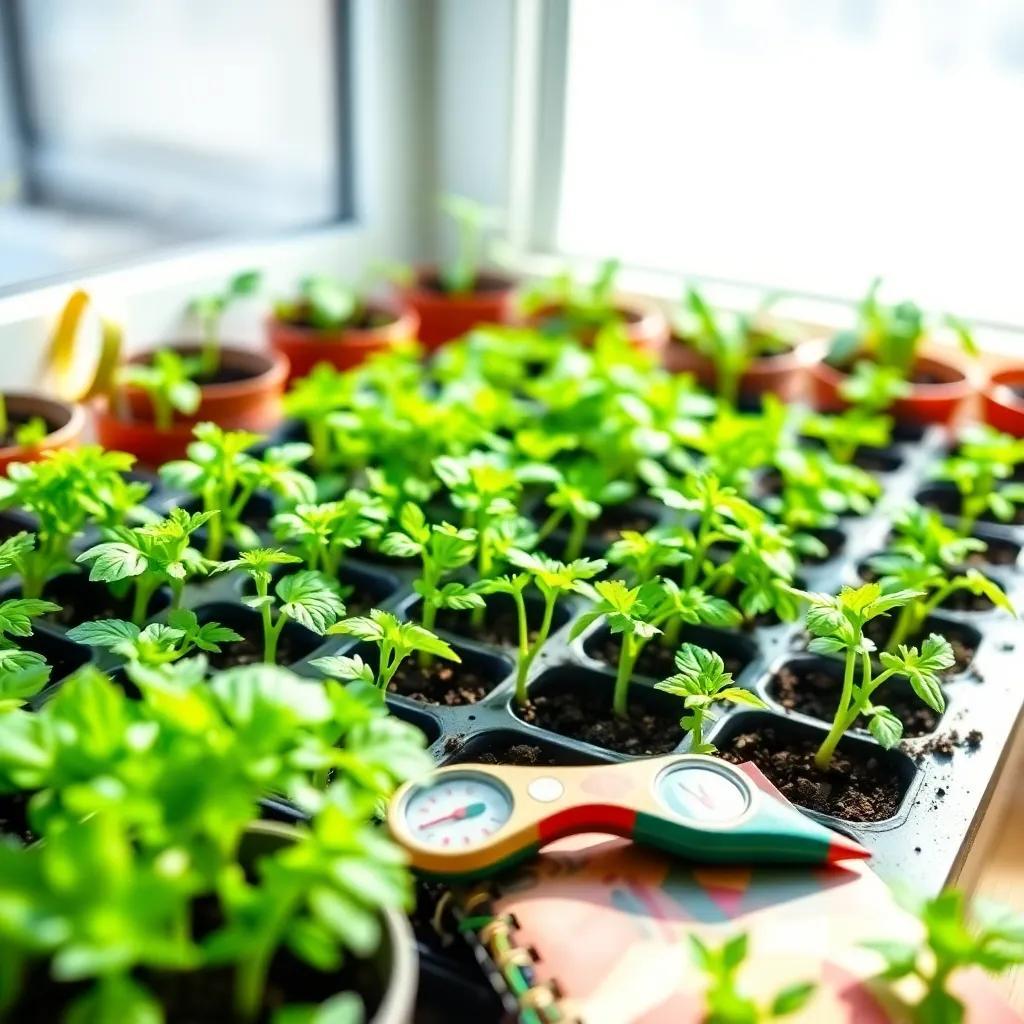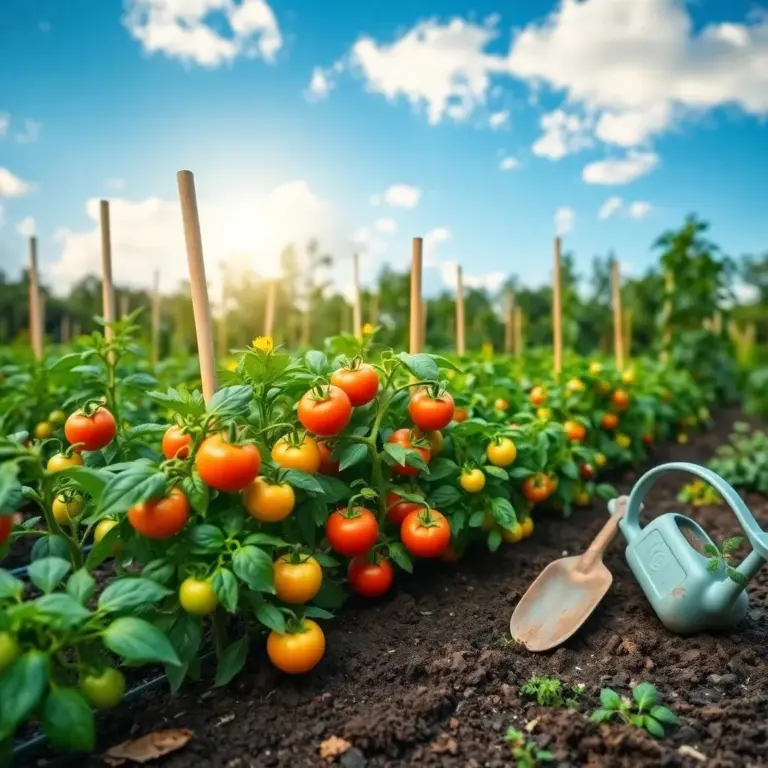Growing your own tomatoes from seeds is like planting little nuggets of deliciousness in your garden! It’s a fun journey filled with tiny sprouts, vibrant plants, and mouthwatering rewards. So, grab your gardening gloves, and let’s dive into the exciting world of tomato cultivation together!
Understanding Tomato Seed Germination Stages
Let’s kick things off by talking about how tomato seeds germinate! It’s one of the most exciting parts of growing your own tomatoes! When you plant those tiny seeds, you might feel like you’re waiting for magic to happen, and trust me, it really is!
First, the germination process begins when the seeds absorb moisture, usually from the soil. The seeds soak up water, and then swelling occurs. It’s like they’re drinking a refreshing glass of water. This makes the seed coat soften, and guess what? The seed’s little embryo starts to wake up!
Here are the key stages of tomato seed germination:
- Water Absorption: Seeds need to be kept consistently moist, but not too soggy. Too much water can cause them to rot!
- Swelling: After soaking up enough water, the seeds swell and start to split the seed coat.
- Radicle Emergence: This is when the tiny root, called the radicle, breaks through the seed coat. It digs down into the soil. Think of it as the seed’s first step into its new home!
- Cotyledons Appear: Soon after, the seed leaves, or cotyledons, pop up. They’re the baby leaves that will provide nourishment until the real leaves come out.
- True Leaves Formation: Once the seedlings start producing true leaves, they’re ready to soak up sunlight and grow strong.
So, patience is key! It generally takes 5 to 10 days for tomato seeds to germinate, depending on the conditions. If you can provide the right warmth, moisture, and a bit of love, those little seeds will reward you! Exciting, don’t you think?
Optimal Conditions for Growing Tomato Seedlings
Now that we’ve got those seeds sprouted, let’s make sure they have the best possible chances to grow into strong tomato plants! Tomato seedlings are like little athletes; they need the right training conditions to thrive. Here’s what you should focus on:
Light
Tomato seedlings need bright, indirect light every day. If they don’t get enough light, they might grow tall and spindly, and that’s not what we want! Here’s a handy tip: provide them with 12 to 16 hours of light daily. If natural light is lacking, think about using some grow lights. Just hang them a few inches above the seedlings!
Temperature
Tomatoes love warmth! Keep your seedlings in a cozy spot with temperatures around 65 to 75 degrees Fahrenheit during the day. It’s like giving them a warm hug! Nighttime temperatures can be a little cooler, but try not to let them drop too low.
Watering
Consistent moisture is important! Water your seedlings when the top inch of soil feels dry. Use a gentle stream of water, so you don’t disturb their little roots. Overwatering? No, thank you!
Humidity
Tomatoes enjoy a bit of humidity, too! To create a humid environment, cover the seedlings with a humidity dome or plastic wrap until they grow a few inches tall. Just remember to remove the cover when they start touching it. They need room to breathe!
Air Circulation
Lastly, don’t forget about good air circulation! A little breeze can help strengthen the stems and prevents diseases. So, if you can, place a fan nearby on a low setting to keep things fresh!
By providing these joyful conditions, you’re setting the stage for healthy, happy tomato seedlings! And who doesn’t love the thought of yummy tomatoes in their future? Happy gardening!

Transplanting Seedlings into Your Garden
Transplanting your tomato seedlings into the garden is like sending your kids off to school—exciting yet a little nerve-wracking! You’ve cared for them while they were tiny, and now they’re ready to thrive in the big world. Let’s look at how to do this right!
Choosing the Right Spot
First things first, pick a sunny location. Tomato plants are sun-lovers! They need at least 6 to 8 hours of direct sunshine each day. So, find a sunny patch with well-draining soil. If there’s too much water, the roots might drown, and that’s a bummer!
Preparing the Soil
Next, it’s time to prep the soil. You can make it richer by mixing in compost or well-rotted manure. This adds nutrients that help your tomatoes grow strong! Use a garden fork or tiller to loosen the soil and remove any pesky weeds.
Planting the Seedlings
Now for the fun part—planting!
- Dig a hole that’s slightly larger than the seedling’s root ball.
- Gently remove the seedling from its pot, being careful with those precious roots!
- Place the seedling in the hole, making sure the soil level matches what was in the pot.
- Firmly press the soil around it, giving it a nice, cozy home.
Spacing Matters
Make sure to space your plants about 24 to 36 inches apart. This gives them room to grow and ensures they get plenty of air circulation.
Watering and Protection
After planting, give your seedlings a thorough drink to help them settle into their new home. If there’s a chill in the air, consider using row covers to protect them from any late frosts.
Transplanting is a significant step in your tomato-growing journey! With the right care, your seedlings will thrive and grow into robust plants that will soon reward you with delicious tomatoes!
Time to Maturity for Different Tomato Varieties
Now that we’ve planted our seedlings, let’s talk about how long it takes for them to grow up and produce those tasty tomatoes! The time to maturity can vary quite a bit based on the type of tomato you’re growing and the conditions you provide.
Know Your Varieties
There are two main types of tomatoes to consider:
- Determinate Tomatoes: These are the bushy types. They have a predictable growing pattern and usually mature pretty quickly, typically within 60 to 70 days after transplanting. They produce their fruit all at once, which is perfect if you’re looking for a concentrated harvest!
- Indeterminate Tomatoes: These varieties keep growing and producing fruit until the frost hits. They take a bit longer, usually between 70 and 90 days. If you love a steady supply of fresh tomatoes throughout the summer, these are the ones for you!
Factors Influencing Maturity
While the type of tomato plays a big role, several factors affect how quickly they mature. Here are some key elements:
- Weather Conditions: Warm, sunny days help tomatoes grow faster. If it’s cool or rainy, growth may slow down.
- Soil Quality: Nutrient-rich soil helps the plants grow strong and mature quicker.
- Watering and Care: Regular watering and fertilizing give your plants the best chance for success.
So, mark your calendars and get ready for that delightful moment when you can finally pick your ripe tomatoes! Each variety has its own unique flavor and uses, so experiment and find your favorites!
Best Practices for Harvesting Tomatoes
Harvesting tomatoes is one of the most rewarding parts of growing them! Nothing beats the feeling of plucking a juicy, ripe tomato from your own garden. But wait! Before reaching for them, let’s talk about how to do it the right way!
When to Harvest
First off, timing is everything! Here’s how you know your tomatoes are ready:
- Color Check: Ripe tomatoes should be rich and vibrant. Red tomatoes should be deep red, while yellow or orange tomatoes should shine bright.
- Firmness Test: Gently squeeze the fruit. It should yield slightly but still feel firm. If it’s too squishy, it may be overripe!
The Harvesting Technique
When you’re ready to collect your tomatoes, here’s how to do it properly:
- Twist and Snap: Hold the ripe tomato gently and give it a little twist. If it’s ready, it should pop right off!
- Using Tools: If a tomato doesn’t want to budge, grab some clean scissors or garden shears. Snip the stem just above the calyx—the leafy bit on top.
Handling and Storing Tomatoes
Tomatoes are delicate, so be extra careful when placing them in a basket. Avoid stacking them too high to prevent bruising. Here’s how to store your fresh harvest:
- Room Temperature: Keep your tomatoes in a cool, dry place, away from direct sunlight.
- Refrigeration: Only refrigerate them if they’re fully ripe and you plan to use them soon, as this can affect their flavor.
By following these harvesting tips, you can enjoy the delicious taste of your homegrown tomatoes in salads, sandwiches, or simply on their own. Happy harvesting!

